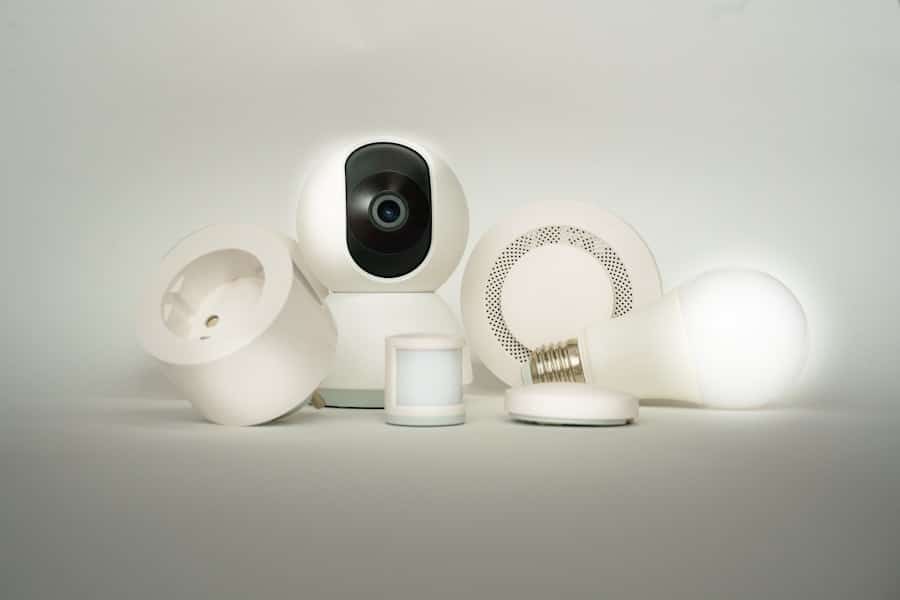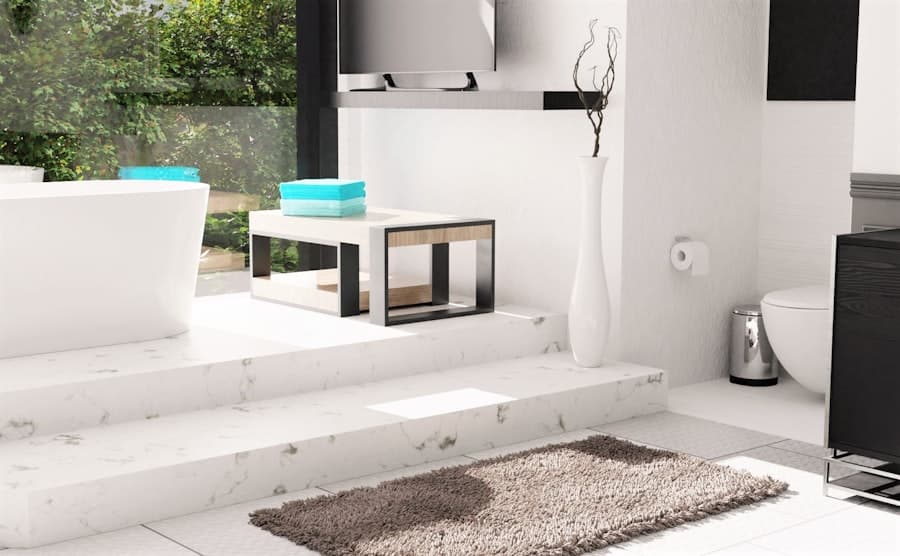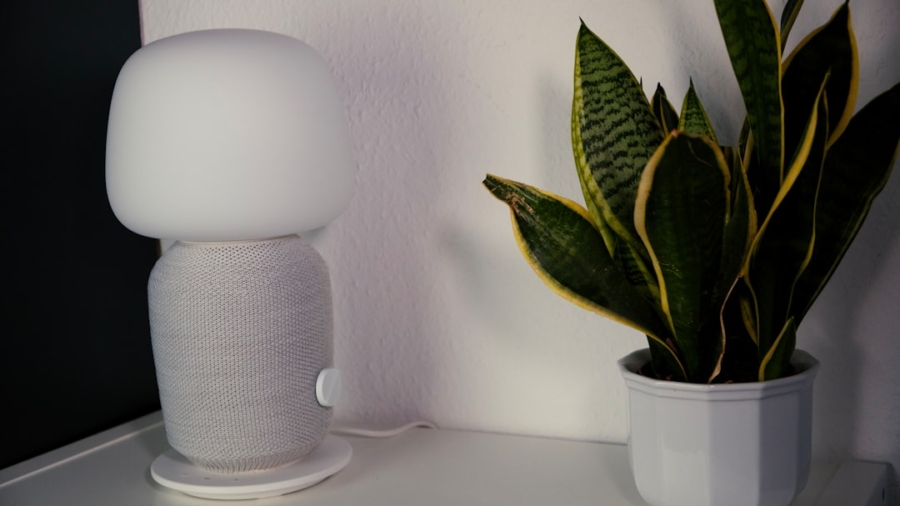The evolution of smart home technology has been nothing short of revolutionary, transforming the way we interact with our living spaces.
This rise can be attributed to several factors, including advancements in wireless communication, the proliferation of smartphones, and the increasing demand for convenience and efficiency in daily life.
The integration of artificial intelligence and machine learning into home devices has further propelled this trend, allowing for more intuitive and responsive systems that adapt to user preferences. As technology continues to advance, the market for smart home products has expanded dramatically. From smart thermostats that learn your heating preferences to security systems that can be monitored from anywhere in the world, the variety of available products is vast.
Companies like Google, Amazon, and Apple have invested heavily in this sector, creating ecosystems that encourage consumers to adopt multiple smart devices. The rise of voice-activated assistants such as Amazon’s Alexa and Google Assistant has also played a pivotal role in making smart home technology more accessible and user-friendly. These developments have not only made smart homes a reality but have also sparked a cultural shift towards embracing technology as an integral part of our everyday lives.
Key Takeaways
- Smart home technology is on the rise, with an increasing number of households adopting connected devices and systems.
- Consumers are embracing smart home products for their convenience, security, and energy-saving capabilities.
- Smart home products are transforming daily life by automating tasks, enhancing security, and providing greater control over home environments.
- Trends in smart home product design and functionality include voice control, interoperability, and integration with other smart devices.
- Smart home products play a significant role in improving energy efficiency, reducing utility costs, and promoting sustainable living.
Consumer Adoption of Smart Home Products
Consumer adoption of smart home products has surged in recent years, driven by a combination of technological advancements and changing consumer attitudes. According to a report by Statista, the global smart home market is projected to reach over $135 billion by 2025, indicating a robust growth trajectory. This increase can be attributed to several factors, including the growing awareness of the benefits associated with smart home technology, such as enhanced security, energy efficiency, and convenience.
As consumers become more familiar with these advantages, they are increasingly willing to invest in smart devices that promise to improve their quality of life. Moreover, the accessibility of smart home products has played a crucial role in their adoption. With prices becoming more competitive and a wider range of options available, consumers are no longer limited to high-end products.
Retailers have responded to this demand by offering budget-friendly alternatives that still provide essential features. Additionally, the rise of online shopping has made it easier for consumers to research and purchase smart home devices from the comfort of their homes. Social media and online reviews have also influenced purchasing decisions, as potential buyers seek recommendations and insights from others who have already integrated these technologies into their lives.
The Impact of Smart Home Products on Daily Life

The integration of smart home products into daily life has led to significant changes in how individuals manage their households.
For instance, smart lighting systems allow users to control their home’s lighting remotely or set schedules for when lights should turn on or off.
This not only enhances comfort but also contributes to energy savings by ensuring that lights are not left on unnecessarily. Similarly, smart appliances such as refrigerators can notify users when groceries are running low or when food items are nearing their expiration dates, streamlining meal planning and grocery shopping. In addition to convenience, smart home products have also enhanced security measures within households.
Smart security cameras and doorbell systems enable homeowners to monitor their properties in real-time from their smartphones, providing peace of mind whether they are at home or away. These systems often come equipped with motion detection and alert features that notify users of any unusual activity. Furthermore, smart locks allow for keyless entry and remote access control, making it easier for homeowners to grant access to guests or service providers without compromising security.
The cumulative effect of these innovations is a more efficient and secure living environment that caters to the needs and preferences of modern consumers.
Trends in Smart Home Product Design and Functionality
As the smart home market continues to evolve, several trends in product design and functionality have emerged. One prominent trend is the emphasis on interoperability among devices. Consumers increasingly expect their smart home products to work seamlessly together, regardless of brand or manufacturer.
This has led to the development of universal platforms and protocols such as Zigbee and Z-Wave, which facilitate communication between different devices. As a result, users can create customized ecosystems tailored to their specific needs without being locked into a single brand. Another significant trend is the focus on user-centric design.
Manufacturers are recognizing that ease of use is paramount for consumer adoption. This has led to the development of intuitive interfaces and mobile applications that simplify device management. Voice control has also become a standard feature across many smart home products, allowing users to operate devices hands-free.
Additionally, there is a growing emphasis on aesthetics; manufacturers are designing products that not only function well but also complement modern interior design trends. This shift towards stylish yet functional devices reflects a broader understanding that technology should enhance rather than detract from the home environment.
The Influence of Smart Home Products on Energy Efficiency
Smart home products have emerged as powerful tools for enhancing energy efficiency within households. One of the most impactful innovations in this area is the smart thermostat, which learns user behavior and adjusts heating and cooling settings accordingly. For example, Nest’s Learning Thermostat analyzes patterns in temperature preferences and occupancy, optimizing energy usage while maintaining comfort levels.
Studies have shown that homes equipped with smart thermostats can reduce energy consumption by up to 15%, translating into significant cost savings over time. In addition to thermostats, smart lighting systems contribute to energy efficiency by allowing users to control lighting based on occupancy and natural light availability. For instance, Philips Hue lights can be programmed to dim or turn off when no one is present in a room or adjust brightness based on the time of day.
Furthermore, smart plugs enable users to monitor energy usage for individual appliances and set schedules for when they should be powered on or off. This level of control empowers consumers to make informed decisions about their energy consumption, ultimately leading to reduced utility bills and a smaller carbon footprint.
Consumer Concerns and Considerations when Purchasing Smart Home Products

Despite the numerous benefits associated with smart home products, consumers often harbor concerns that can influence their purchasing decisions. One primary concern is related to privacy and data security. Many smart devices collect personal data to function effectively, raising questions about how this information is stored and used by manufacturers.
High-profile data breaches have heightened awareness around these issues, prompting consumers to seek out products from companies with robust security measures in place. Transparency regarding data collection practices has become a critical factor for consumers when evaluating potential purchases. Another consideration is compatibility with existing systems and devices.
As consumers invest in multiple smart home products over time, they may encounter challenges related to interoperability between different brands or ecosystems. This concern can lead to frustration if devices do not communicate effectively or require separate apps for management. To mitigate this issue, consumers are increasingly looking for products that adhere to common standards or offer compatibility with popular platforms like Amazon Alexa or Google Assistant.
Additionally, customer support and ease of installation are important factors; consumers prefer products that come with clear instructions and responsive customer service in case they encounter issues.
The Future of Smart Home Technology and Consumer Expectations
Looking ahead, the future of smart home technology appears promising as consumer expectations continue to evolve. One anticipated trend is the increased integration of artificial intelligence into smart devices. As AI algorithms become more sophisticated, we can expect devices to not only respond to commands but also anticipate user needs based on historical data and contextual information.
For example, a smart refrigerator could suggest recipes based on available ingredients or automatically order groceries when supplies run low. Moreover, sustainability will likely play a central role in shaping future smart home innovations. As environmental concerns become more pressing, consumers are expected to prioritize energy-efficient solutions that minimize their ecological impact.
Manufacturers will need to focus on developing products that not only enhance convenience but also contribute positively to environmental sustainability. This could include features such as solar-powered devices or systems designed for easy recycling at the end of their lifecycle.
The Role of Smart Home Products in the Internet of Things (IoT) Ecosystem
Smart home products are integral components of the broader Internet of Things (IoT) ecosystem, which encompasses a vast network of interconnected devices that communicate with each other over the internet. This interconnectedness allows for greater automation and control within homes, enabling users to create personalized environments tailored to their lifestyles. For instance, a user could set up a routine where their smart thermostat adjusts the temperature while their coffee maker starts brewing as soon as they wake up in the morning.
The IoT ecosystem also facilitates data sharing among devices, leading to enhanced functionality and user experiences. For example, a smart security system could communicate with a smart lighting system to automatically illuminate pathways when motion is detected outside the home at night. This level of integration not only improves convenience but also enhances safety by providing users with real-time information about their surroundings.
As more devices join the IoT ecosystem, we can expect an increasingly sophisticated interplay between technology and daily life, further solidifying the role of smart home products as essential tools for modern living.
In the rapidly evolving landscape of smart home technology, understanding consumer trends is crucial for both manufacturers and consumers. A related article that delves into the intricacies of selecting technology for younger users is

